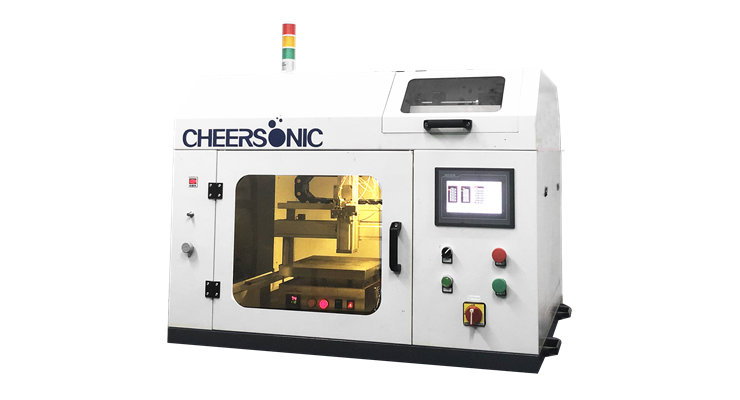Fuel Cell Manufacturing Using Ultrasonic Spray Technology
A variety of fuel cells utilize catalysts at both the anode (to oxidize fuel and convert it to protons/hydrogen cations and electrons) and the cathode (convert hydrogen cations and oxygen to water), often precious metal, nanocarbon, or other nanomaterial-based. Doped carbon nanotubes and core-shell metallic or composite nanoparticles are two examples of such. Such catalyst materials need first to be synthesized and then coated onto electrode and/or membrane surfaces for use in fuel cells. Solid oxide fuel cells (SOFCs) that do not utilize catalyst coatings are also of interest.
Cheersonic high-temperature nozzles, nebulizers, and particle generators can be used for fuel cell catalyst nanomaterial synthesis via chemical vapor deposition and/or spray pyrolysis techniques. Moreover, Cheersonic can custom manufacture AACVD and spray pyrolysis systems for fuel cell catalyst synthesis, based on customer goals and requirements, whether for the development or production of catalyst particles, for the research lab, start-up, or experienced production facility. Cheersonic nozzles or probes may also be used for spray particle synthesis, sonochemical synthesis, or other wet-chemical synthesis techniques utilized to make catalyst materials and nanoparticles.
Cheersonic nozzles can also be used to coat electrode or membrane substrates with catalyst materials. As a consequence of synthesis, or post-synthesis, depending on the technique used, catalyst particles are often suspended, forming "inks", which then need to be coated onto appropriate electrodes or membranes for use in fuel cells. Cheersonic's ultrasonic atomizer nozzles and automated robotic coating systems can be used to accurately, precisely, and uniformly coat catalyst films and layers onto such substrates, minimizing overspray and hence minimizing waste, which is also important for device optimization, reproducibility, sustainability, and cost savings. Cheersonic develops robotic coating systems from the benchtop/research level up, allowing for scalability of processes used to create novel, "cutting-edge" fuel cell catalysts as part of a clean, sustainable energy future. Furthermore, solution- or suspension-based spraying using Cheersonic nozzles can potentially be utilized to print or coat solid oxide fuel cell materials, even if such spraying need occur over a heated substrate or in a heated environment such as an oven or furnace.
About Cheersonic
Cheersonic is the leading developer and manufacturer of ultrasonic coating systems for applying precise, thin film coatings to protect, strengthen or smooth surfaces on parts and components for the microelectronics/electronics, alternative energy, medical and industrial markets, including specialized glass applications in construction and automotive.
The Company’s solutions are environmentally-friendly, efficient and highly reliable, and enable dramatic reductions in overspray, savings in raw material, water and energy usage and provide improved process repeatability, transfer efficiency, high uniformity and reduced emissions.
Cheersonic’s growth strategy is focused on leveraging its innovative technologies, proprietary know-how, unique talent and experience, and global reach to further develop thin film coating technologies that enable better outcomes for its customers’ products and processes. For further information, visit https://www.cheersonic-liquid.cn/en/.

Comments
Post a Comment